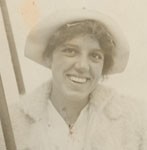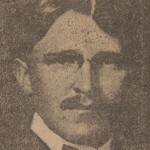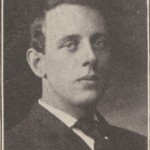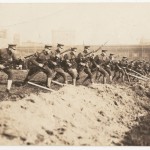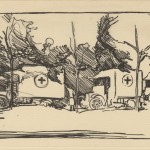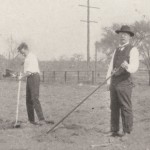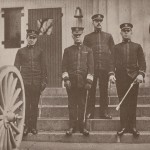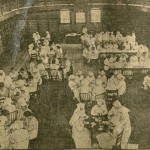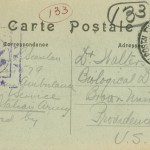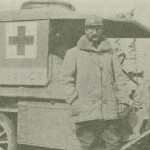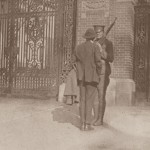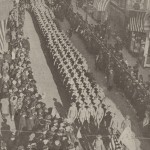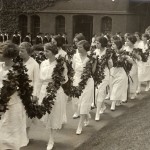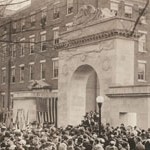Stories
The vignettes below provide a glimpse into how the University changed and adapted as America entered the war, and into the lives of some of the Brown servicemen who served and lost their lives.
Turning Point: A travelogue from the summer of 1914 provides a glimpse inside a Pembroker’s privileged experience of England and France at a turning point in history.
Professor Micoleau: Henri F. Micoleau, Associate Professor of Romance Languages, was the one faculty member to die in the war. Lieutenant Micoleau was killed in action at the first battle of the Marne on September, 9th, 1914.
Floss: A Brown Highlander: Florence J. H. Price, 1906, was the first graduate of the University to die in the war. Price was a prominent athlete while at Brown. In 1915, he joined the Canadian Highlanders. Lieutenant Price was mortally wounded near Ypres on Memorial Day, 1916.
Aggressive Adaptation: In 1916 and early 1917 the focus of the University and much of the country was on Preparedness. By 1918 Brown had adopted a policy of “Aggressive Adaptation” and on October 1st, 1918, the 275 students registered members of the Student Army Training Corps and the Brown University Naval Unit were inducted into National Service.
Brown Ambulances: The University’s first major contribution to the war effort was the sponsorship of three ambulances sent to France. The first had Brown University inscribed on the side panels. The second and third were named in honor of Professor Henri F. Micoleau and Florence J. H. Price, class of 1906.
Faculty War Gardens: In the spring and summer of 1917 and 1918, members of the Brown faculty contributed to the nation’s food conservation efforts by cultivating 7 acres of land near Andrews field. Lessons on canning and food conservation were taught in the Summer Biological Laboratory.
A Changed Campus: During the war, Brown University effectively became a military training camp for the Government. Dormitories became barracks, the Union became a mess hall, Rhode Island Hall was headquarters for the Student Army Training Corps. Manning Hall was headquarters for Brown’s Naval Training with a canon and two machine guns out front.
The Women’s College Does its Bit: Students from the Women’s College contributed to the war effort a in a variety of ways. The women knitted sweaters and socks, sewed bandages, canned fruits and vegetables, worked for the Red Cross, and raised funds for alumni going overseas for war work.
Letters from Over There: Correspondence from Brown’s servicemen was carefully preserved by the War Works Committee. Letters and postcards written by 274 Brown University students, alumni, and faculty that served in the war comprise the World War I Correspondence collection. Excerpts and transcriptions from selected letters are featured along with digital objects.
The Ambulance Unit: In 1917, a number of Brown students, alumni and faculty volunteered for ambulance work in France with the American Field Service at their own expense. Later, thirty-six Brown men enlisted in Brown’s Ambulance Unit; the first unit of the Medical Enlisted Reserve Corps. The men sailed to Genoa and traveled overland to France. After the armistice, fifteen members of Brown’s Unit were awarded the Croce al Merito di Guerra for brave and faithful service.
Influenza and Quarantine: Shortly after the University opened in the fall of 1918, the influenza pandemic arrived in Providence. To protect students from contracting the disease, the University enforced a strict quarantine of the campus and stationed armed guards at the gates.
Armistice: When news of the Armistice, signed on November 11th, 1918, arrived on campus, the University community joined the throngs in celebratory parades through downtown Providence. Letters held in the WWI Letters Correspondence collection describe scenes of the armistice in various locales in Europe.
Unscrambling the Omelette: Within months of the armistice, the University began returning to its place “as a seat of learning, as opposed to a seat of war.” 108 Brown servicemen who had withdrawn from the University to join the ranks, returned to their studies on campus.
Memorialization: Forty-two of Brown’s students, alumni, and faculty would never return. The University quickly made plans to memorialize those who died during their war service, whether they lost their lives on the front lines or from the deadly influenza virus. The Soldiers Memorial Gate was dedicated on April 6th, 1921.

